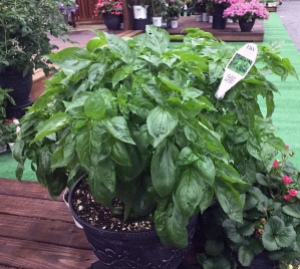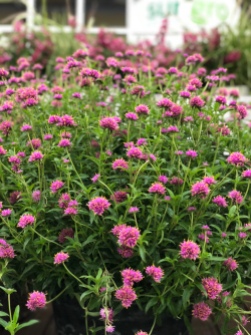 By Teresa Woodard
By Teresa Woodard
Last week, the green industry met in Columbus, Ohio for Cultivate 2018 – a massive trade show in which 10,000 attendees and 700 exhibitors from 18 countries converged for a four-day event! Here, bulb companies from the Netherlands, seed companies from Japan and plant breeders, marketers and growers across the United States showcased their new plants and products.
Across the tradeshow floor, it was evident excitement is building in the horticulture industry as more and more people value the power of plants in our backyards, workplaces, health care institutions, schools, universities and downtown communities.
 According to National Institute of Consumer Horticulture, the industry contributes $196 billion to the U.S. economy and creates more than 2 million jobs. The industry is fueling consumers’ hunger for more plants with many new varieties. Here’s a sneak peak at 10 up-and-comers:
According to National Institute of Consumer Horticulture, the industry contributes $196 billion to the U.S. economy and creates more than 2 million jobs. The industry is fueling consumers’ hunger for more plants with many new varieties. Here’s a sneak peak at 10 up-and-comers:
- Edibles: Two show winners include Amazel™ basil, a game-changing, mildew-resistant Italian sweet basil by Proven Winners, and Hort Couture’s Edibliss kales which combine sweet, soft edible leaves with the more flamboyant colors of ornamental kale. All-American Selections mini bell peppers (Pepper Chili Pie and Sweetie Pie) also grabbed attention for their snackable size.
- Mangaves: Talk about a statement plant for containers! This succulent cross between an agave and manfreda was turning heads at the Walters Gardens booth.
- Perennial power: Watch for Proven Winners’ new PRIMO® series of heucheras with their big flouncy leaves in black, peach, pistachio green, rose and mahogany. They’re perfect for impatient gardeners that want quick results. For showy blooms, look for the new ‘Pop Star’ balloon flowers (Platycodon grandifloras ‘Pop Star’ white) by Benary, Poquito™ dwarf hummingbird mints (Agastache) by Terra Nova with profuse blooms in orange, blue, yellow and lavender; and Summer Spice Crème de la Creme hardy hibiscus.
- Double blooms: When a single bloom isn’t enough, breeders are introducing new double hybrids like Fall in Love™ ‘Sweetly’ Japanese anemone, MiniFamous® Uno Double PinkTastic calibrachoa and Superbells® Doublette ‘Love Swept’ calibrachoa.
- Expanded fall plant palette: Tiring of mums for your fall displays? Look for ornamental Corn Pink Zebra (a dwarf corn for containers) and new Sneezeweed hybrids (Helenium autumnale ‘Salud Embers’).
- Black-eyed vincas: In the Vinca Tatoo™ series, each vinca bloom is inked with a dark center. Colors include papaya, black cherry, tangerine and raspberry.
- Must-have gomphrena: ‘Truffula Pink’ was a Proven Winners standout with its heavy flower coverage, pollinator appeal and toughness in extreme heat and humidity. Plant it in mass in flower borders or containers.
- More mandevillas: Suntory is introducing two new giant Sun Parasol® mandevillas: 1) Giant Dark Pink with changing shades of coral pink and white blooms and 2) Giant Marbled Crimson with variegated foliage and red blooms. Columbus, Ohio gardener Paul Schrader trials many varieties in his eye-catching garden on City Park Ave. in German Village.
- Canary wing begonia: Jared Hughes, 30-year-old plant breeder from central Ohio, is overwhelmed with the response to his first nationally released plant introduction with Ball Ingenuity. It’s a standout in shade gardens with its chartreuse angel-wing leaves and non-stop red blooms. The plant won the 2018 Retailers’ Choice Award at the trade show.
- Scented modern rose: Suntory has reintroduced perfume to disease-resistant shrub roses with its line of repeat-blooming Brindabella™ roses in red, pink, apricot, salmon, blush, white and purple.























 By Michael Leach
By Michael Leach
 Good weeds face problems. Common milkweed, which can be weedy due to its underground assault, force roots and wins our hearts. It’s a food source for Monarch butterfly larvae. It’s garden-worthy flowers have an enticing fragrance and attract a wide range of pollinators, not just Monarchs.
Good weeds face problems. Common milkweed, which can be weedy due to its underground assault, force roots and wins our hearts. It’s a food source for Monarch butterfly larvae. It’s garden-worthy flowers have an enticing fragrance and attract a wide range of pollinators, not just Monarchs.